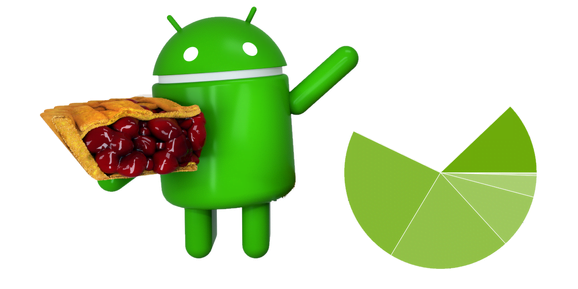
The Android developer website hosts a distribution dashboard that details the adoption of Google’s mobile operating system versions. With over 2 billion active Android devices out there, this is useful information that Google updates on a monthly cadence. But Google stopped updating the page last year — today marks the six-month mark.
We’ve reached out to Google multiple times in the past half a year. In January, Google told us that the dashboard was undergoing site maintenance and that we’d hear back when it’s fixed. In April, the company declined to comment.
This data is particularly useful to anyone who needs to make decisions regarding Android. It’s incredibly valuable to know how widely (or narrowly) an Android version — or more importantly, an API level — has been adopted.
Android adoption numbers

The last significant milestone in Android adoption land was in July, when Android Oreo passed 10% adoption. In August, Google started rolling out its successor, Android Pie.
The distribution numbers were updated for the last time on October 26. Here are the numbers from that day (notice that Android Pie is missing):
- Android 8.0/8.1 Oreo (August 2017, December 2017): 21.5%
- Android 7.0/7.1 Nougat (August 2016, October 2016): 28.2%
- Android 6.0 Marshmallow (October 2015): 21.3%
- Android 5.0/5.1 Lollipop (November 2014, March 2015): 17.9%
- Android 4.4 KitKat (October 2013): 7.6%
- Android 4.1/4.2/4.3 Jelly Bean (July 2012, November 2012, and July 2013): 3.0%
- Android 4.0 Ice Cream Sandwich (December 2011): 0.3%
- Android 2.3 Gingerbread (December 2010): 0.2%
In early December, a small note was added below the chart: “(update coming soon: data feed under maintenance).” More than four months have passed since. Google either has an odd definition of “soon” or something else is amiss.
If we go by historical trends, Android 9.0 Pie today should have somewhere just under 10% of the, ahem, pie. Maybe it’s more, maybe it’s less. We don’t know, because Google is refusing to update the data.

The distribution dashboard is on the Android developers website. If you’re a developer, the good news here is that you can access your own distribution statistics in the Google Play Console. And those statistics are much more granular, letting you filter by not just by Android version, but also by device, country, language, app version, and carrier. But that data is only for the devices on which users are running your app. If you want a broader picture, you’re out of luck.
Faster Android updates?
Google releases major Android versions on an annual basis. With every new release, Android users hope their phones will get updated sooner than they have before. Except for Pixel phones — and Essential, which ironically is not making phones anymore — the wait is excruciatingly long. I’m talking between two and eight months, if the update arrives at all.
Google has tried to both change the importance of the annual updates and speed up their arrival. With Android ICS, the company released Google Play Services, which it uses to push various features and improvements to Android devices without requiring a full operating system update. With Android Nougat, the company started releasing monthly security updates. With Android Oreo, Google introduced Project Treble, which modularized the mobile operating system so that it is easier to update. Android Q promises its own update improvements.
Since Android Pie is the major release that succeeds Android Oreo, that was going to be the real test for Google’s latest attempt to improve updates. Every device that shipped with Project Treble enabled had the potential to get Android Pie quickly. Phone manufacturers and carriers of course still had to play ball, but from a technical perspective, this was the easiest Android update yet.
Predecessors Android Nougat and Android Oreo both took 5 months to pass 1% adoption and 10 months to pass 10% adoption. Those are low bars, but because Google has cut off the data, we don’t even know if Android Pie met them.
Google must fix this
The problem here is twofold. Google hasn’t updated the numbers, and it hasn’t said why. Maintenance doesn’t take months for something that used to be updated monthly.
Google can’t stay quiet about this forever. Every week that goes by, the data becomes even more useless. Thankfully, Google I/O 2019, the company’s biggest developer event of the year, is only two weeks away.
[“source=venturebeat”]









